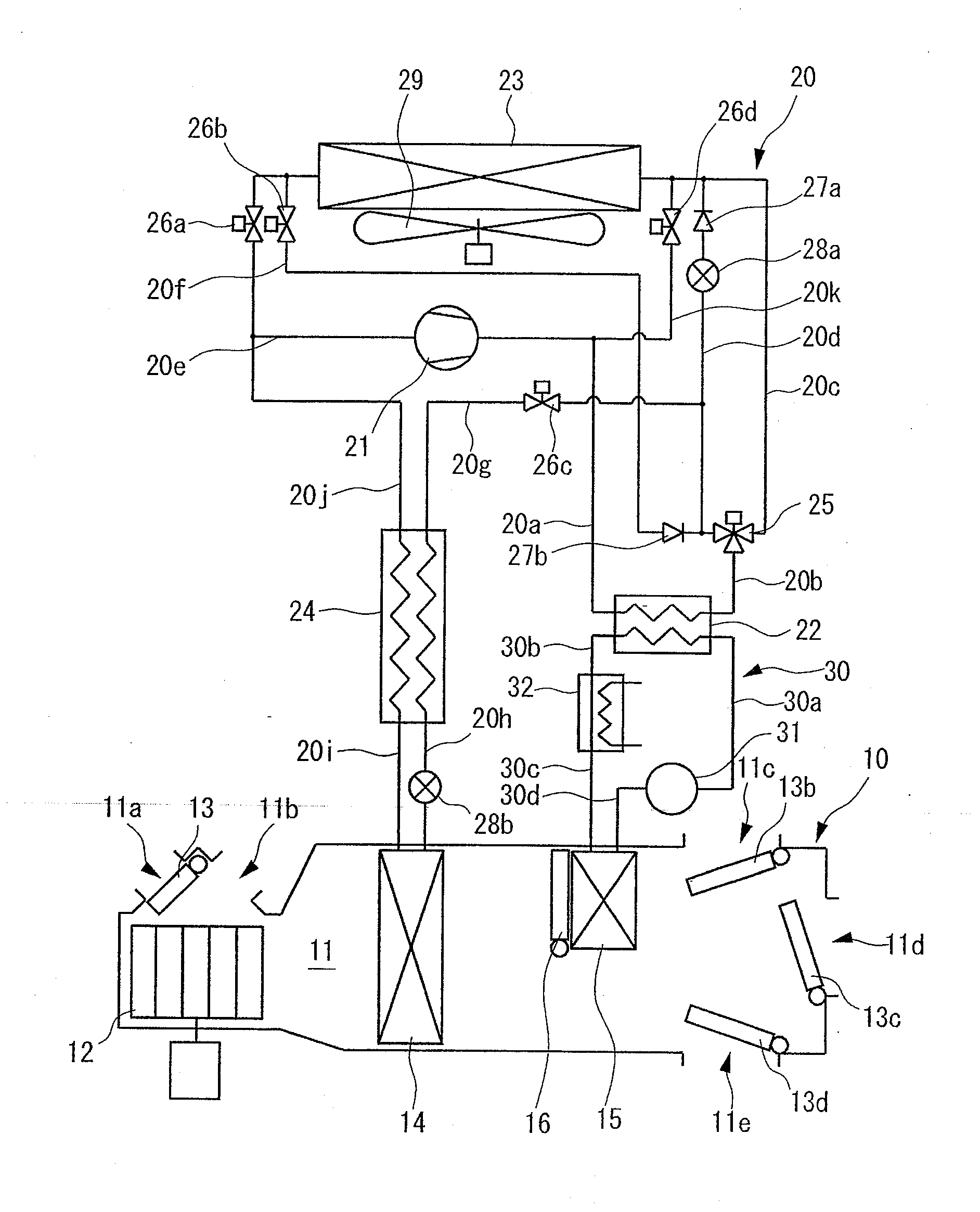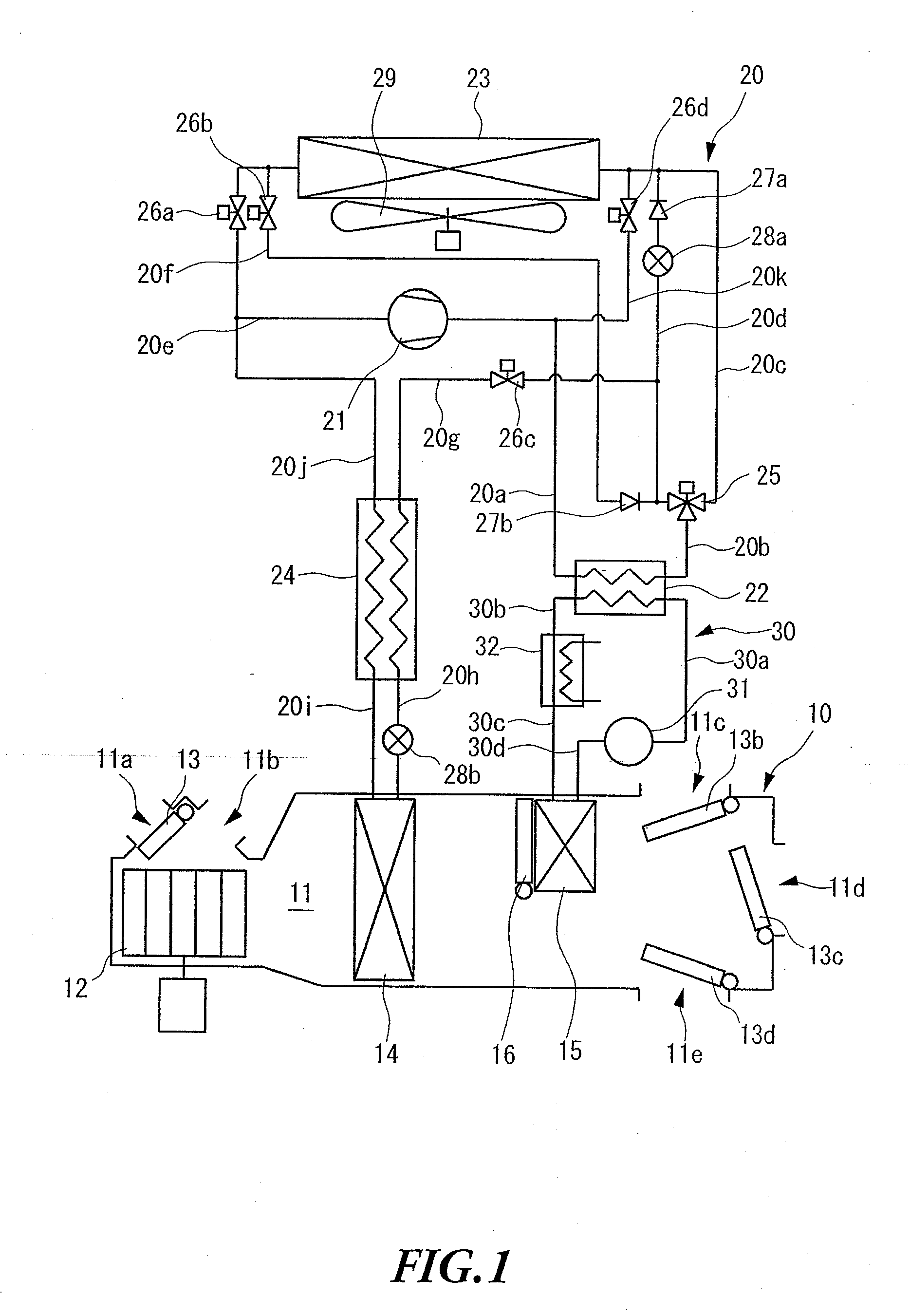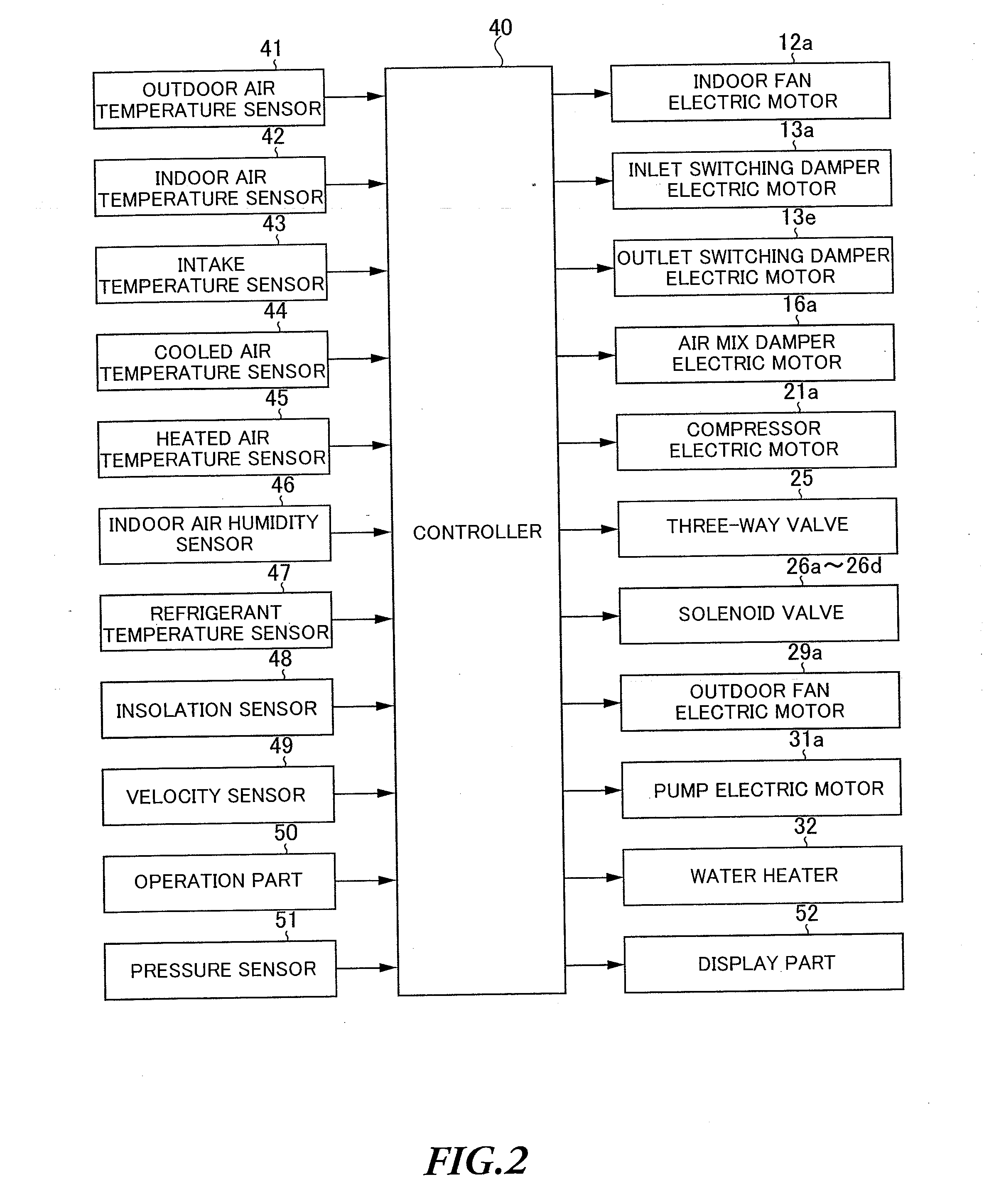Air Conditioning Device for Vehicle
a vehicle and air conditioning technology, applied in domestic cooling devices, program control, instruments, etc., can solve the problems of difficult to obtain the exhaust heat that can heat the air to be supplied to the interior of the vehicle by using the electric motor, the above-mentioned vehicle air conditioning apparatus is not applicable to electric cars, and the outdoor heat exchanger is likely to be frosty, so as to reduce the electric power consumption, the effect of extending the mileage of the vehicle and minimal operation
- Summary
- Abstract
- Description
- Claims
- Application Information
AI Technical Summary
Benefits of technology
Problems solved by technology
Method used
Image
Examples
embodiment 1
[0065]FIG. 1 to FIG. 8 show Embodiment 1 of the present invention.
[0066]The vehicle air conditioning apparatus according to the present invention is applicable to an electric car that is run by electric power and that is driven by the electric power of a battery to be used to run the electric car. As shown in FIG. 1, this vehicle air conditioning apparatus includes an air conditioning unit 10 provided in the vehicle interior, and a refrigerant circuit 20 and a water circuit 30 that are formed across the vehicle interior and the outdoor.
[0067]The air conditioning unit 10 includes an air flow passage 11 that allows the air to be supplied to the vehicle interior to pass through. An outdoor air inlet 11a and an indoor air inlet 11b are provided in the first end side of the air flow passage 11. The outdoor air inlet 11a is configured to allow the outdoor air to flow into the air flow passage 11, and the indoor air inlet 11b is configured to allow the indoor air to flow into the air flow ...
embodiment 3
[0167]FIG. 10 to FIG. 22 show Embodiment 3 of the present invention.
[0168]As shown in FIG. 10, this vehicle air conditioning apparatus includes an air conditioning unit 10 provided in the vehicle interior, and a refrigerant circuit 20 and a water circuit 30 that are formed across the vehicle interior and the outdoor.
[0169]The air conditioning unit 10 includes an air flow passage 11 that allows the air to be supplied to the vehicle interior to pass through. An outdoor air inlet 11a and an indoor air inlet 11b are provided in the first end side of the air flow passage 11. The outdoor air inlet 11a is configured to allow the outdoor air to flow into the air flow passage 11, and the indoor air inlet 11b is configured to allow the indoor air to flow into the air flow passage 11. Meanwhile, a foot outlet 11c, a vent outlet 11d and a defroster outlet 11e are provided in the second end side of the air flow passage 11. The foot outlet 11c is configured to allow the air flowing through the ai...
embodiment 9
[0346]FIG. 28 to FIG. 35 show Embodiment 9 of the present invention.
[0347]The vehicle air conditioning apparatus according to the present invention is applicable to an electric car that is run by electric power and that is driven by the electric power of a battery to be used to run the electric car. As shown in FIG. 28, this vehicle air conditioning apparatus includes an air conditioning unit 10 provided in the vehicle interior, and a refrigerant circuit 20 and a water circuit 30 that are formed across the vehicle interior and the outdoor.
[0348]The air conditioning unit 10 includes an air flow passage 11 that allows the air to be supplied to the vehicle interior to pass through. An outdoor air inlet 11a and an indoor air inlet 11b are provided in the first end side of the air flow passage 11. The outdoor air inlet 11a is configured to allow the outdoor air to flow into the air flow passage 11, and the indoor air inlet 11b is configured to allow the indoor air to flow into the air fl...
PUM
 Login to View More
Login to View More Abstract
Description
Claims
Application Information
 Login to View More
Login to View More - R&D
- Intellectual Property
- Life Sciences
- Materials
- Tech Scout
- Unparalleled Data Quality
- Higher Quality Content
- 60% Fewer Hallucinations
Browse by: Latest US Patents, China's latest patents, Technical Efficacy Thesaurus, Application Domain, Technology Topic, Popular Technical Reports.
© 2025 PatSnap. All rights reserved.Legal|Privacy policy|Modern Slavery Act Transparency Statement|Sitemap|About US| Contact US: help@patsnap.com



